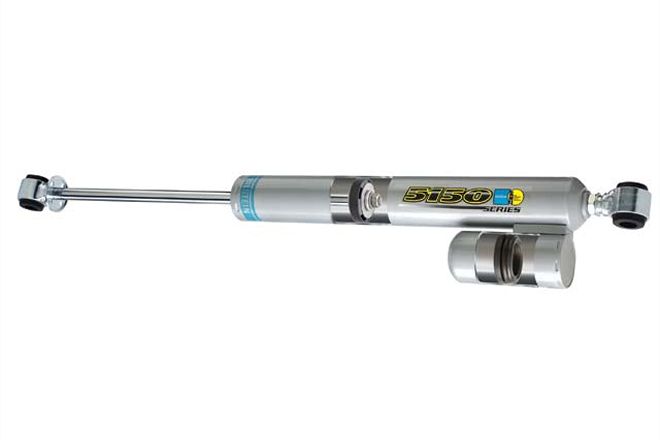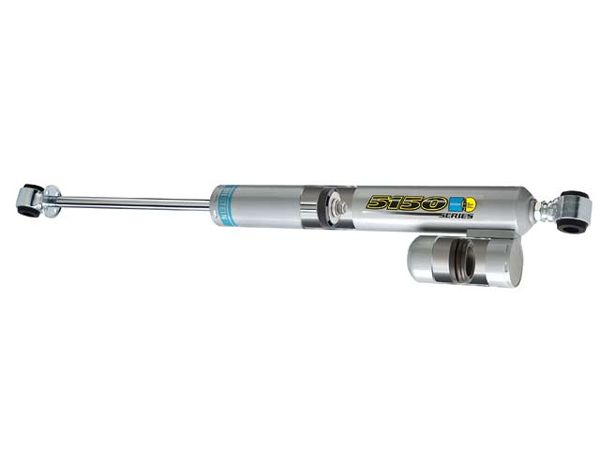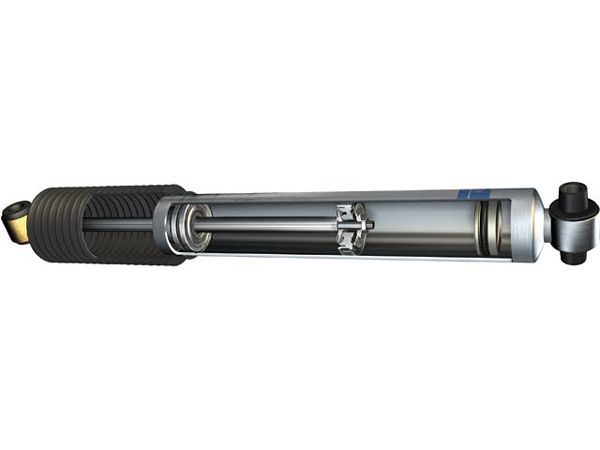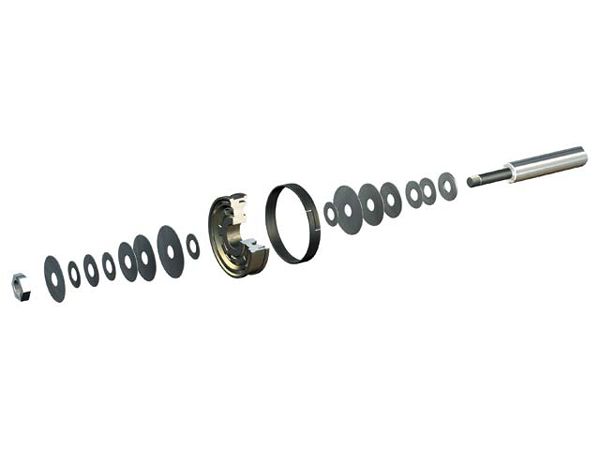
 Sean P. Holman
Contributor
Contributors:
Courtesy Of BilsteinKore Performance
Sean P. Holman
Contributor
Contributors:
Courtesy Of BilsteinKore Performance

With the price of admission into newer vehicles steadily climbing, 4x4s are being asked to be more and more versatile, doing everything from handling your daily commuter chores to primary trail rig duty. So what do we consider the most important element of your vehicle if you want to experience a serene ride over glass-smooth blacktop, controlled bounding over a fast sandy wash, or steady clambering up a boulder-strewn route? The answer is easy: your shocks. While shocks are fairly simple in principle and design, we'll walk you through the basics and answer some common questions to better help you understand what makes shocks an important aspect of your trail rig, and hopefully arm you with enough knowledge to take the edge off of your next shock-buying experience.
If we are going to discuss the basics of how shocks work, then we will start by defining what a shock is. A shock is simply a hydraulic device that converts kinetic energy (movement) into heat energy, which is dissipated through the shock body.
Basically, a shock controls the up and down movement of a vehicle. Now you might say, "Hey, what about springs?" Well, a spring supports the vehicle's weight and only allows up and down movement of the suspension, but doesn't control it. Without shocks on your four-by, you will bounce and bob down the highway, and crash and bang on the bumpstops over each and every surface imperfection. A shock's primary function is to dampen the spring movement and keep your tire in contact with ground at all times, providing the driver with comfort and control, through handling and braking. In fact, worn shocks actually contribute to longer braking distances, something our heavy rigs with giant meats tend to be sensitive to. Spring rates only control the movement of your chassis, but shocks control the length of time it takes for each of these movements to occur.
Think of shocks as timing devices. Without shocks, consistent tire contact patches would not exist, and controlling the vehicle would be nearly impossible.

To understand how a shock works, we must understand the different parts that make up a shock. The first thing you notice when looking at a shock is the shock body. This is what mounts to the vehicle and houses the air and hydraulic shock fluid. The next thing you'll see is a chrome rod, sticking out of the body. This is the shaft, which also mounts to the vehicle, and moves up and down with the suspension movement, also called a stroke. Inside the shock body, a piston sits on the shaft, and has a series of shims connected to it with various-sized holes that allow the shock oil to pass through them as the shock compresses and extends. Unlike air, hydraulic fluid cannot be compressed, so as the piston travels up and down within the shock body, fluid is forced through the shims, resisting vehicle movement. With more or bigger holes, there is less resistance, and the shock piston travels through the oil faster, creating a softer shock action. The opposite is true with less, or smaller holes.
Premium shocks have the added benefit over standard shocks because they replace the air with a pressurized gas, such as nitrogen. Nitrogen resists cavitation, or the forming of air bubbles in the hydraulic fluid. You have probably encountered cavitation if you have ever taken a stock vehicle down a fast sandy wash and experienced the vehicle becoming uncontrollable after a fairly short distance, only to find the symptoms disappearing after a short time of the vehicle sitting and the shock oil settling and cooling down. A shock which has cavitated can no longer provide the resistance necessary for the shock to do its job.

Shocks usually wear out gradually, but some things can happen, especially off-pavement, to hasten their wear. One of the first things to look for is either a nicked or bent shaft, which can easily be caused by flying gravel or debris. Once damaged, the shaft can allow contaminants to enter the oil and destroy the piston seal, which will eventually lead to a leak of the shock fluid.
If not replaced, the shock will eventually lose its ability to function properly. Other signs of worn shocks are excessive bouncing after crossing a dip or bump, rocking back and forth after a stop, excessive body roll around corners, tire cupping, and straight-line braking that isn't so straight.
Twin Tube: Low-end, low-pressure twin-tube technology has been around for automotive ages and has not changed much since its inception. This basic design usually has soft valving and is relatively inexpensive to manufacture, providing the reason many stock vehicles are still equipped with them from the factory. While many of these shocks are nitrogen-charged, the design has the oil and gas mixed together in the same chamber, which causes issues with cavitation, heat generation, and fading.
Monotube: A monotube shock is a high-pressurized gas shock that utilizes a single-walled shock body. Because heat is one of the major factors in decreased performance and life of shock absorbers, the monotube design extends shock life by allowing excessive heat from within the shock body to transfer to the exterior, enabling it to dissipate heat more efficiently and thereby reducing fade. Monotube shocks also provide a larger internal working area, and high-end monotube shocks have a dividing piston that permits oil to expand as heat builds up, preventing cavitation and viscosity loss, helping the shock to maintain full damping characteristics as temperatures rise and offering superior performance during punishing use. Another characteristic of monotube shocks is a special seal that keeps the air and oil separate, another measure that prevents foaming. Most monotube shocks are valved specifically for the application.
Adjustable: There are several different types of construction offered in adjustable shocks, depending on the manufacturer. The one thing adjustable shocks have in common is a knob, or other means, for the user to adjust valving and shock response to the vehicle they are installed on.
Reservoir: A reservoir shock is a monotube shock that carries its fluid in a large external reservoir that resembles a second shock body. Benefits of a reservoir shock include more shock fluid volume for cooler operation, and the ability to place the reservoir in a remote area to receive better airflow.
Piggyback: The piggyback shock is an entry-level reservoir shock of monotube construction, which runs cooler and more efficiently than a standard monotube because the reservoir allows for extra fluid capacity. It is also more compact than a true reservoir shock and can mount in almost any location a traditional monotube does because of its low profile design.
Bypass: Instead of a piston that allows oil to travel through it, bypass shocks use a piston that plunges fluid into external tubes. Each tube has a specific function for either compression or rebound. At the entrance to the tubes is a check valve, which is user-adjustable to control how fast fluid can flow through this port. If the user has a setting for less oil, the shock is tuned stiffer; for more fluid, and the shock is softer. On some bypass shocks, different-length tubes allow even finer tuning as shorter tubes control low-velocity movements, while longer tubes can be tuned for high-speed movements. As the piston passes the last port on the compression stroke, the remaining few inches of travel are tuned with many shims to be very stiff in order to slow the travel of the shaft.
Bumpstop-An elastic cushion used to stiffen the suspension as it nears the end of its compressed travel.
Cavitation-The sudden formation of air bubbles in shock fluid, foaming.
Compression-The action of a shock returning from an extended state.
Damper-A fluid-filled device, which regulates fluid flow to restrain movement.
Damping-The process of absorbing energy.
Nitrogen-An inert gas used to pressurize a gas-charged shock.
Piston-The solid cylinder or disk that fits snugly into a shock body cylinder and moves under force or pressure.
Rebound-The action of a shock returning from a compressed state.
Shaft-The long slender arm that connects the piston to the moving suspension of a vehicle, also known as a rod.
Shims-A series of thin, steel, round, and flat washers with varying holes, outer diameters, and thicknesses that are arranged in sequence to provide a damping effect by exerting resistance on the oil flow through a shock piston, also known as valves.
Shock body-The part of the shock that houses the piston, valves, oil, and gas.
Stroke-The travel of a shock piston and shaft.
Spring Rate-A measurement of force needed to compress the spring.
Tuning-The changing of the shocks internal shims, or valving, to match the suspension of a specific vehicle.
Valves-A term that refers to a series of shims or valve stack that are used either for the compression or the rebound damping.